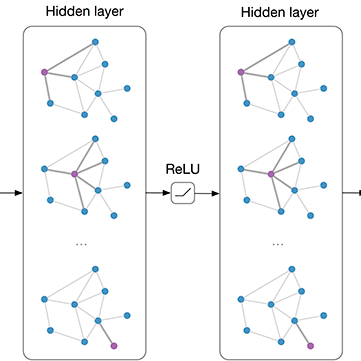Convolutional Neural Networks (CNNs) achieve impressive results in a wide variety of fields. Their success benefited from a massive boost with the ability to train very deep CNN models. Despite their positive results, CNNs fail to properly address problems with non-Euclidean data. To overcome this challenge, Graph Convolutional Networks (GCNs) build graphs to represent non-Euclidean data, and borrow concepts from CNNs and apply them to train these models. GCNs show promising results, but they are limited to very shallow models due to the vanishing gradient problem. As a result most state-of-the-art GCN algorithms are no deeper than 3 or 4 layers. In this work, we present new ways to successfully train very deep GCNs. We borrow concepts from CNNs, mainly residual/dense connections and dilated convolutions, and adapt them to GCN architectures. Through extensive experiments, we show the positive effect of these deep GCN frameworks. Finally, we use these new concepts to build a very deep 56-layer GCN, and show how it significantly boosts performance (+3.7% mIoU over state-of-the-art) in the task of point cloud semantic segmentation. The project website is available at https://sites.google.com/view/deep-gcns
翻译:革命神经网络(CNN)在广泛的领域取得了令人印象深刻的成果。它们的成功得益于通过培养非常深入的CNN模型而带来的巨大提升。尽管它们取得了积极的成果,但CNN未能恰当地解决非欧洲裔数据的问题。为了克服这一挑战,GCN(GCN)建立图表以代表非欧洲裔数据,并从CNN(CNN)中借用概念,并应用这些概念来培训这些模型。GCN(GCN)显示了有希望的成果,但由于渐渐消失的梯度问题,它们仅限于非常浅的模型。因此,最先进的GCN算法没有深度超过3或4层。在这项工作中,我们提出了成功培训非常深入的GCNN的新方法。我们从CNN(GCN)那里借用了概念,主要是残余/感官连接和变相变相,并将其调整到GCN结构。通过广泛的实验,我们展示了这些深层次的GCN框架的积极效果。最后,我们利用这些新概念来构建一个非常深的56级GCN,并展示了它是如何极大地提升GCN(+3%mgoal)网站的运行部分。



